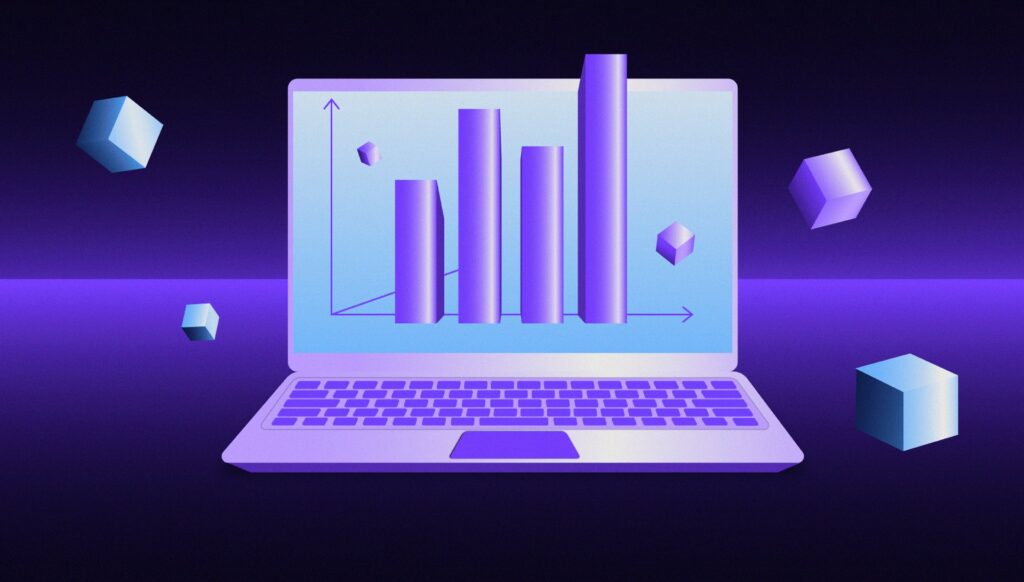How to Create a Service Blueprint
- Digital Strategy
Delivering a service to a customer involves multiple components, technologies and people working together across various channels. This can make it difficult for companies to monitor customer experiences and identify areas for improvement.
Failing to provide a positive user experience can destroy a business – fast! A company must create a seamless service process if it wants to grow and maximise value – this is where service blueprints come in.
What is a service blueprint?
First introduced in 1984 by G. Lynn Shostack, a service blueprint is a map or diagram that provides a visual representation of the steps within a service process.
This gives a company a complete overview of how its service and related user experience is delivered across all channels.
Service blueprint vs customer journey map
A customer service blueprint is similar to a customer journey map, but it goes much deeper. Service blueprinting provides valuable insights into the customer experience, along with all employee actions and additional processes involved in the service.
The main goal of a customer journey map is to understand the customers’ experience. Whereas, a service blueprint is a visual representation of how a company creates that customer experience.
What are the business benefits of service blueprinting?
Build the full picture
A service blueprint provides a company with a complete visible overview of a service structure. This allows businesses to build a full picture of their service processes, along with the employee’s experience and the customer’s experience.
Improve customer experience
A service blueprint helps businesses emphathise with customer needs and understand how a user experiences its product. A manager can track customer interactions related to delivering a service and identify areas for improvement.
Enhancing the customer experience has the potential to double business revenue – 86% of customers are willing to pay more for a great experience.
Improving your customer’s experience should be a top priority for every business owner and service blueprinting can help companies achieve this goal.
Support improvement efforts
A customer service blueprint is a powerful tool that makes it easy for businesses to identify weaknesses and support quality improvement efforts. Service blueprinting can also be used to design an entirely new service process with a human-centric approach.
Gain a competitive advantage
Service blueprints allow businesses to compare their services with their competitors and identify ways to stand out from the crowd.
Managers can also use blueprints to identify potential gaps in their services and determine what actions are needed to achieve the desired goal.

What are the key components of a service blueprint?
There are different types of service blueprints, with some being more visual and complex than others. However, every service blueprint must include five key components to be effective:
- Customer actions: This should include all the steps, actions, choices, and interactions the customer experiences while going through the service to reach a particular goal. In most cases, this information is taken from a customer journey map.
- Frontstage employee actions: All the employee actions that are visible to a customer when they are going through the service. For instance, when a waiter takes a food order from a customer at a table in a restaurant.
- Backstage employee actions: Actions that occur behind the scenes so the customer does not see them taking place. For instance, when a chef prepares a customer’s meal in a kitchen restaurant.
- Support processes: Any additional actions and interactions that support the employee delivering the service to a customer.
- Lines: Service blueprints should also include three lines to categorise each element and identify how the steps in a service process interact with each other.
- Line of interaction: This line includes the direct interactions between the customer and the company.
- Line of visibility: This line separates the service activities that are visible to the customer from those that are not visible.
- Line of internal interaction: This separates the employees who have direct contact with customers from those who do not directly support customers.
What is the physical evidence in a service blueprint?
Evidence is the final component of a customer service blueprint. This should include what customers come into contact with when going through the service process e.g. a store location or a company website.
What other elements should service blueprints include?
Companies can adapt service blueprints with additional elements to suit their business needs and goals. This may include:
- Time: You can add a timeline to your service blueprint to display the estimated duration at each step of the process.
- Arrows: These can be added to your customer service blueprint to represent relationships. A single arrow can show a one-way exchange while a double arrow can be used to show that agreement is required from both parties.
- Emotions: You can display your employees’ emotions in your service blueprint, highlighting how they will feel at each step of the service process.
How do I create an effective service blueprint?
There are some simple steps you can follow if you’re looking for guidance on how to make a service blueprint.
Step 1: Identify your goal
The first step is to define what business goal you want to achieve with your customer service blueprint. You must identify which customer service scenario you want to investigate and have a clear understanding of the main purpose of building a blueprint.
Step 2: Conduct research
You must then gather research about the actions and experiences your customers and employees will have. This will include:
- Customer research: Collect information relating to the actions and interactions that customers have while moving through the service to reach a particular goal. This data can usually be taken from an existing customer journey map. Write down the customer experience in chronological order and make sure you identify which customer segment this particular service process caters to.
- Internal research: You will also need to gather information about your employee’s experience when going through the service delivery process. This can be obtained through various methods including direct observation and employee interviews/surveys.
Step 3: Build your service blueprint
You can now start mapping your customer service blueprint using the data collected. Make your blueprint map more engaging and interactive using visuals, colours, and more.
Running a service blueprinting workshop before mapping your blueprint will align your team and ensure that the process is collaborative and efficient. LinkedIn provides the following tips for running a successful service blueprinting workshop:
- Set a clear objective for the workshop in advance so everyone knows what you are working towards.
- Take the time to prepare for your workshop and make sure that all the necessary materials and information are ready beforehand.
- Make your customer the focus of everything you do during your service blueprinting workshop.
- Always hold a debrief session following your workshop to discuss what went well and what could be improved next time.
Step 4: Review and refine
You should review your service blueprint in detail before you share it with your team members. Additional elements like arrows and timelines can be added at this stage to improve the functionality of your blueprint.
Once it is finalised, you can distribute the blueprint to your team members. You may decide to organise another team meeting or workshop to share the blueprint and discuss the outcome.
This will give your employees the opportunity to ask questions about your service process and clarify any issues.
Should I use a service blueprint template?
A service blueprint template is a useful tool that will help you build an effective blueprint for your service process. Leveraging a service blueprint template will save you valuable time and effort when compared to building a service blueprint from scratch.
By downloading our service blueprint template, you can save time and effort in creating your own blueprints from scratch and take advantage of a pre-designed format that follows best practices in service design.


There are plenty of quality free service blueprint templates available on the internet. Take a look at the template by the Nielsen Norman Group if you’re looking for a user-friendly tool for online service blueprinting and want help getting started.
Final thoughts
Service blueprints are powerful tools that help companies gain a complete overview of their services, along with the employee’s experience and the customer’s experience.
Managers can use service blueprinting to identify weaknesses in the service delivery process and optimise complex interactions. This, ultimately, improves the customer experience and helps companies maximise sales and business value.


